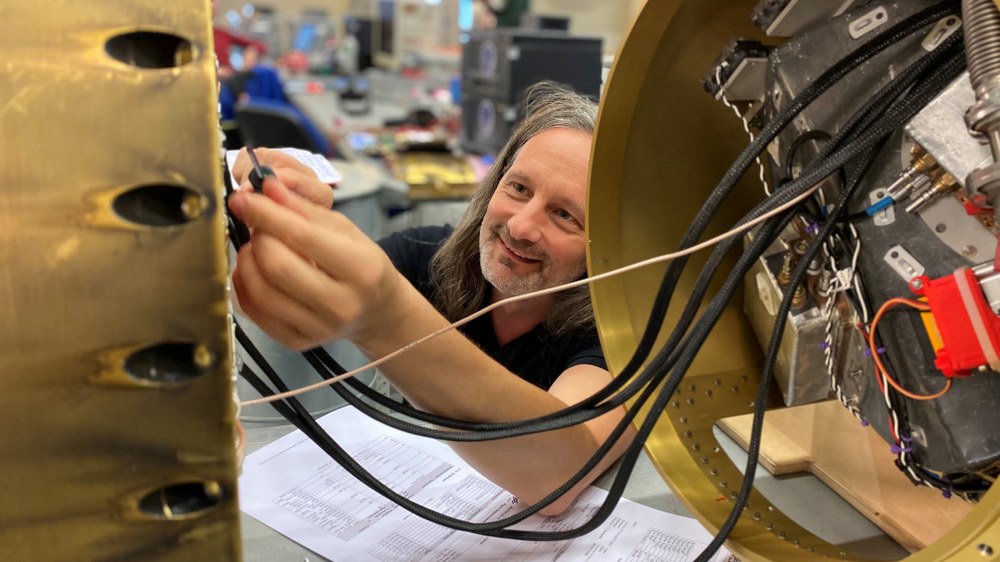Puppet master for the campaign team

Thomas Voigtmann’s office is a little different from usual at the moment. Out of the window, his gaze falls on pine trees and remnants of snow; to the other side, he looks through panes of glass at the hall where experiments are being prepared for a flight in microgravity. The physicist is at the Esrange Space Center in Sweden with a large team. What he has been working on as Project Manager for the last few months is now taking shape - the MAPHEUS 13 rocket with four experiments from materials physics and space medicine.
From theory to microgravity
For Thomas Voigtmann, it all began with his own experiment on MAPHEUS 7. DLR’s MAPHEUS (Material Physics Experiments under Microgravity) programme regularly takes research items into weightlessness - “and before that, I’d never had anything to do with microgravity,” says Thomas Voigtmann. The 47-year-old is a theoretical physicist, his subject until now the theory of how glass-forming liquids work. So, with the move to DLR came nothing less than a new way of working and thinking - working on the experiment, fine-tuning and testing in a large hall to prepare for the flight into microgravity, living and working with a large team on site during campaigns. Somehow, however, MAPHEUS 7 was the moment when the theoretical physicist embarked on research in microgravity and campaign work.

Since the launch of the MAPHEUS 9 sounding rocket, he has been in charge as Project Manager, planning the campaigns and has been responsible for selecting the experiments and ensuring that all those involved from DLR’s MORABA Mobile Rocket Base and the experiment teams from the DLR Institute of Materials Physics in Space and the DLR Institute of Aerospace Medicine are in sync and on track. “Preparing an experiment can take one to two years,” he says.
Juggling the different fields of work
The MAPHEUS campaigns were intended to take place once a year. Due to the COVID-19 pandemic, which made teamwork on site impossible, and other things, recent launches have taken place at shorter intervals. “This is also great fun but means that other matters and areas then have to take a back seat.” For Thomas Voigtmann, these can sometimes be sleep and free time. In addition to MAPHEUS, his own research work, theoretical physics and supervising students as a professor at the University of Düsseldorf still have to be accommodated in his working life.
Teamwork near the Arctic Circle
For the Project Manager, MAPHEUS is ‘learning on the job’. “With each campaign, my knowledge improves,” - understanding of the individual experiments and their implementation and of the processes and work at the MORABA team. ‘Campaign life’ is also part of his everyday work. For this, a team of more than 30 lives for approximately two weeks at the rocket base, which is located about 50 kilometres from Kiruna, Sweden’s northernmost city, and secluded in the forest. Where rockets launch and return to Earth, distance from human habitations is mandatory. The ‘Aurora’ hotel is located on the Esrange site, and guests cater for themselves in communal kitchens. If the launch date is in summer, the days are long, and the light is often magical. In winter, however, temperatures drop to minus 30 degrees Celsius, and everything freezes in ice and snow. “This team life is definitely part of the campaign.” Especially for MAPHEUS, the team is well-rehearsed and brings a lot of experience to the table. On the one hand, Voigtmann is often involved in an experiment himself, on the other hand he is the leader of the overall project – he says it is important to always have a sense of one’s own role as well. So far, he says, all campaigns under his leadership have gone smoothly. And it should stay that way as much as possible.
Tags:
